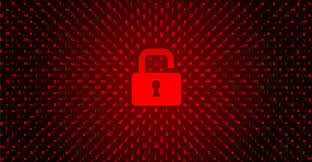How ATLAS Can Help Now: Ransomware and How to Protect Your Data

 You are Reading..
You are Reading..
How ATLAS Can Help Now: Ransomware and How to Protect Your Data
Ransomware is a profitable market for cybercriminals and can be difficult to stop. Prevention is the most important aspect of protecting your personal data. To deter cybercriminals and help protect yourself from a ransomware attack, keep in mind these 7 dos and don’ts from our ATLAS IT Services Team.
1. Do use security software.
To help protect your data, install and use a trusted security suite that offers more than just antivirus features. Here is a link to top rated security software options for 2020.
2. Do keep your security software up to date.
New ransomware variants continue to appear, so having up-to-date internet security software will help protect you against cyberattacks. Here is a helpful article on how to check that yours is up to date.
3. Do update your operating system and other software.
Software updates frequently include patches for newly discovered security vulnerabilities that could be exploited by ransomware attackers.
4. Don’t automatically open email attachments.
Email is one of the main methods for delivering ransomware. Avoid opening emails and attachments from unfamiliar or untrusted sources. Phishing spam in particular can fool you into clicking on a legitimate-looking link in an email that actually contains malicious code. The malware then prevents you from accessing your data, holds that data hostage and demands ransom. If you do accidentally click on something malicious, do not panic. Contact us if you need help or guidance.
5. Do be wary of any email attachment that advises you to enable macros to view its content.
Once enabled, macro malware can infect multiple files. Unless you are absolutely sure the email is genuine and from a trusted source, delete the email. When in doubt, delete it and do not download unknown attachments.
6. Do back up important data to an external hard drive.
Attackers can gain leverage over their victims by encrypting valuable files and making them inaccessible. If the victim has backup copies, the cybercriminal loses some advantage. Backup files allow victims to restore their files once the infection has been cleaned up. Ensure that backups are protected or stored offline so that attackers can’t access them. Here are some examples of external hard drives.
7. Do use cloud services.
This can help mitigate a ransomware infection, since many cloud services retain previous versions of files, allowing you to “roll back” to the unencrypted form. For more information on cloud services and how to use them, contact us here.
With new ransomware variants appearing (especially in the current situation of today), it’s a good idea to do what you can to minimize your exposure. By knowing what ransomware is and following these dos and don’ts, you can help protect your computer data and personal information from being ransomware’s next target.
To know more about any of these solutions, security concerns or any IT services we can provide to help you navigate this difficult, confusing and ever-changing time, contact us here.
